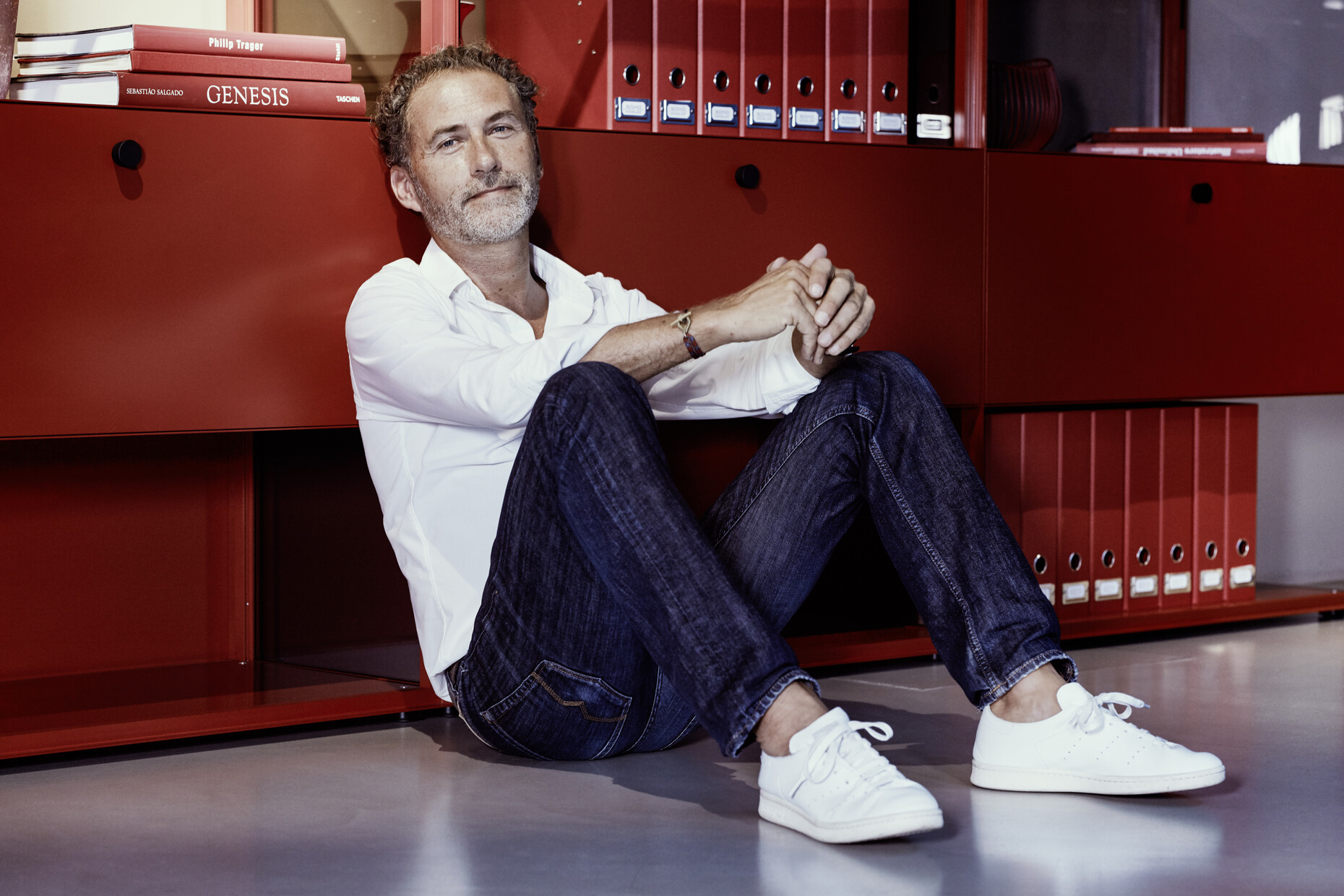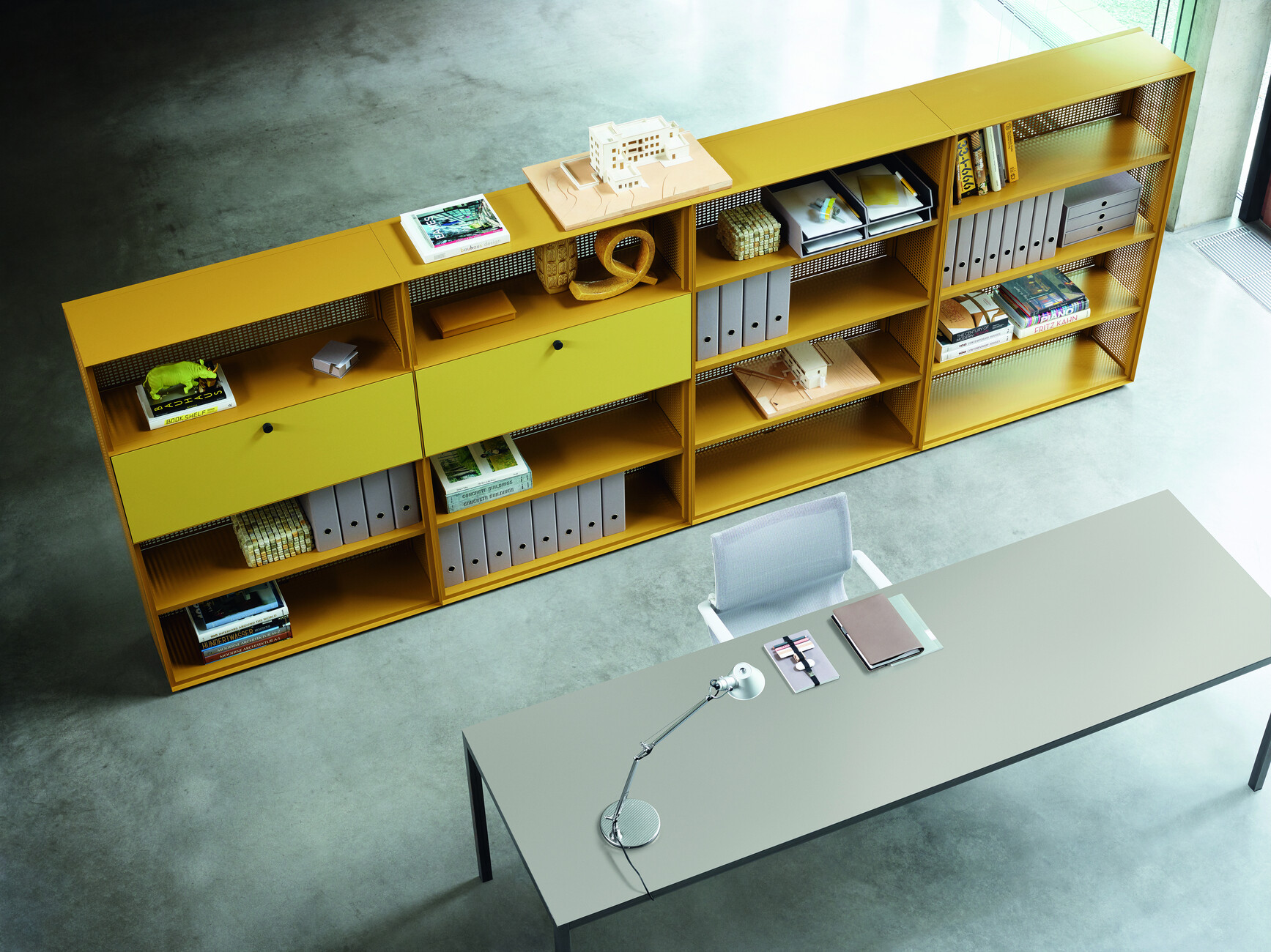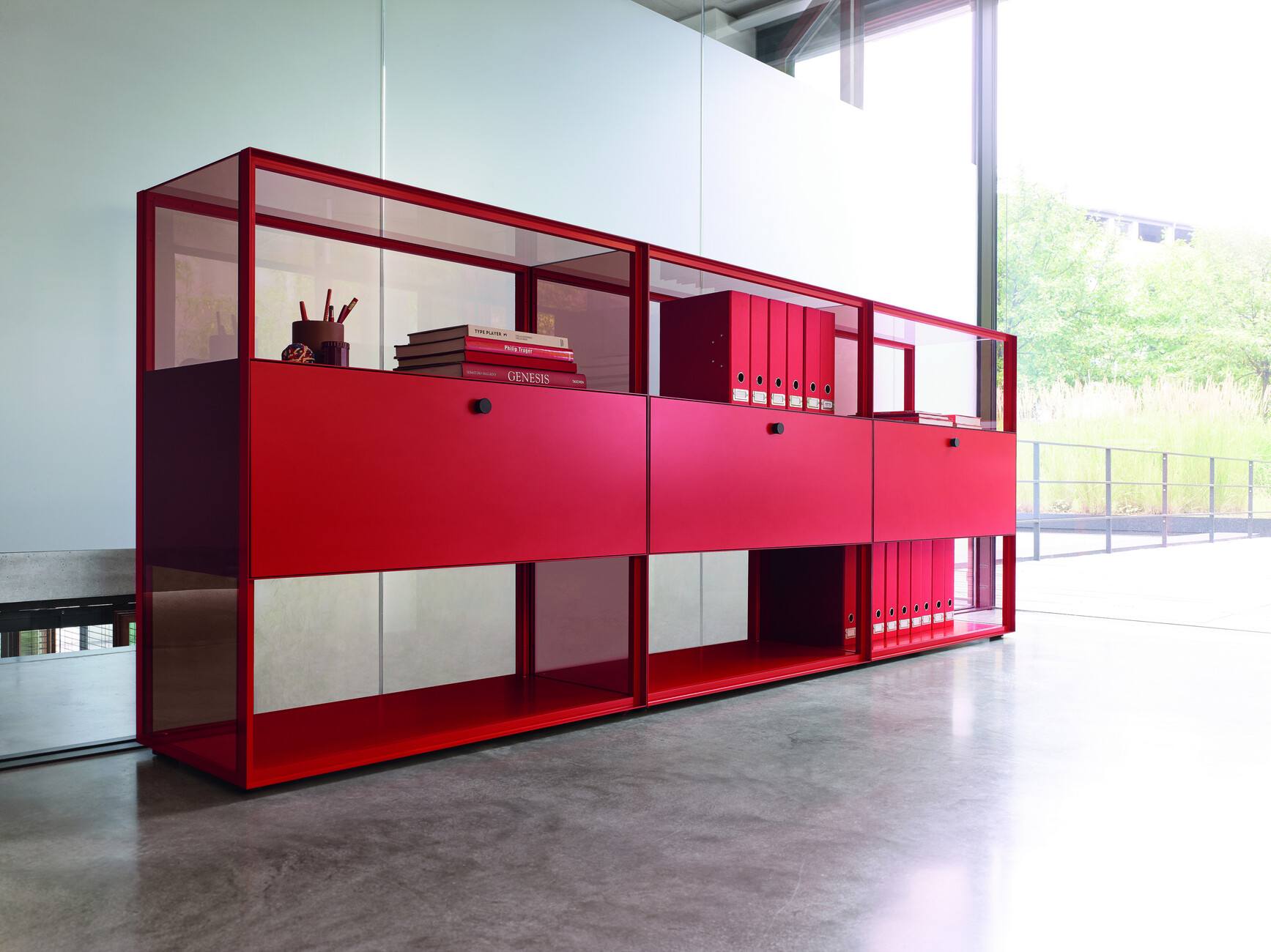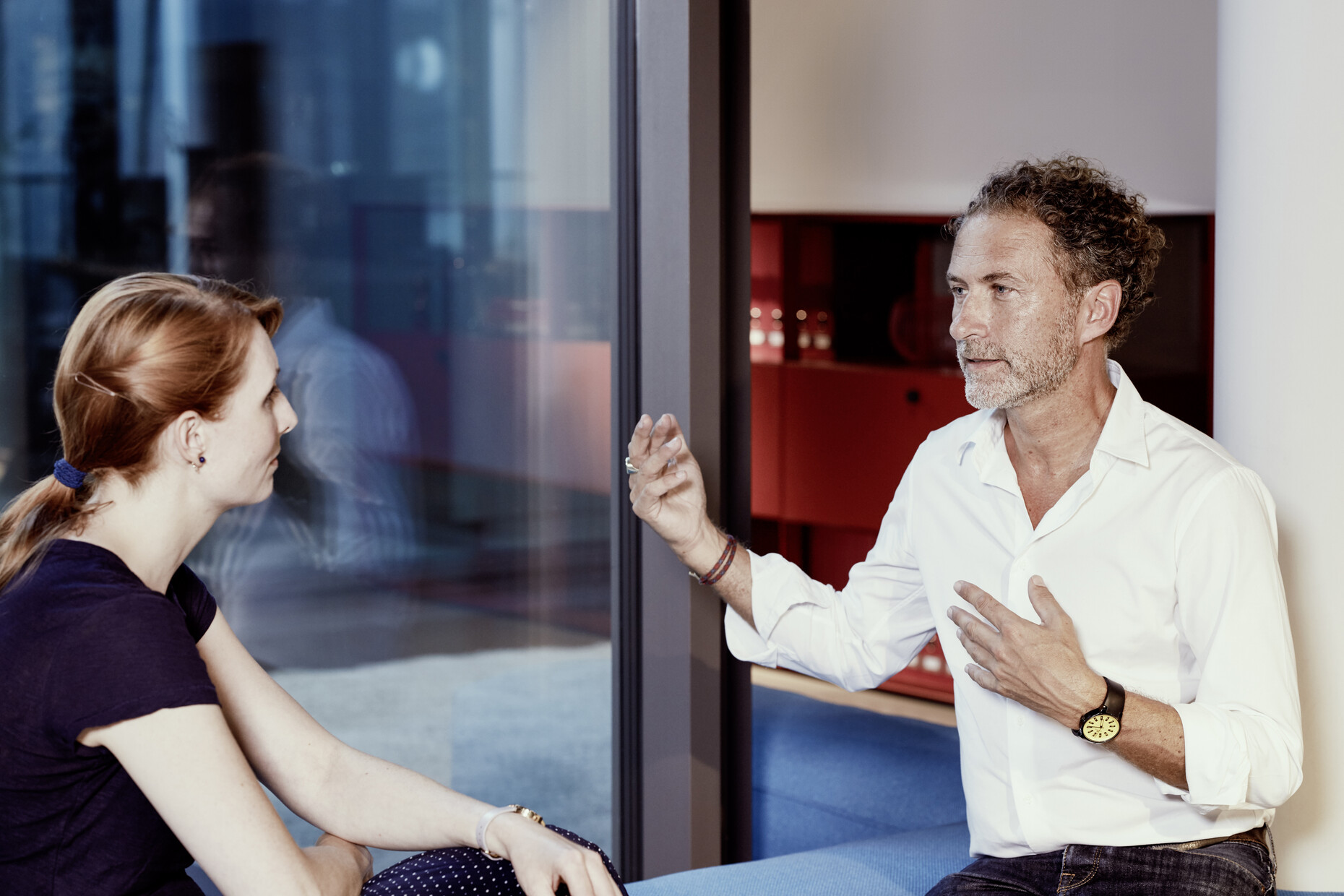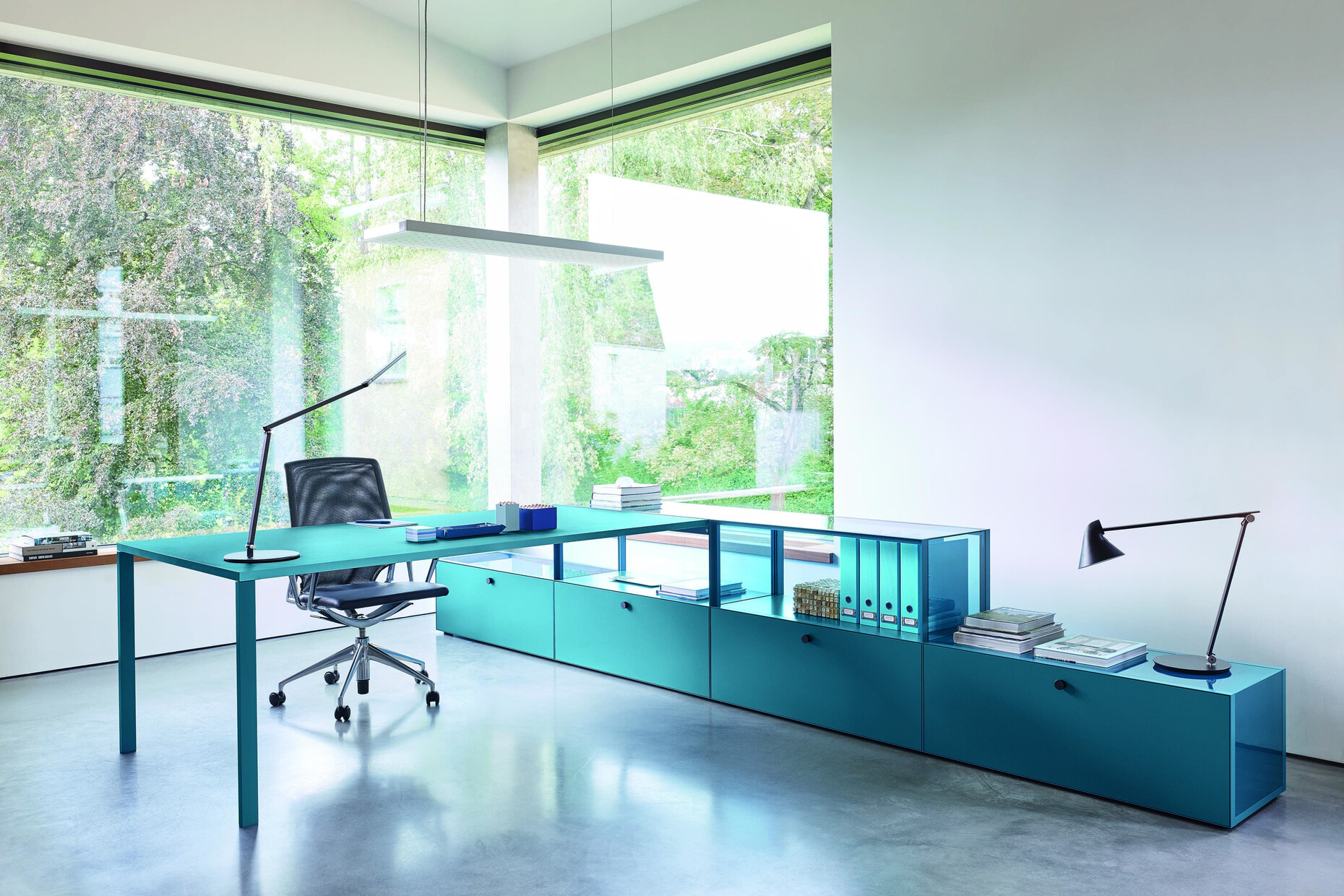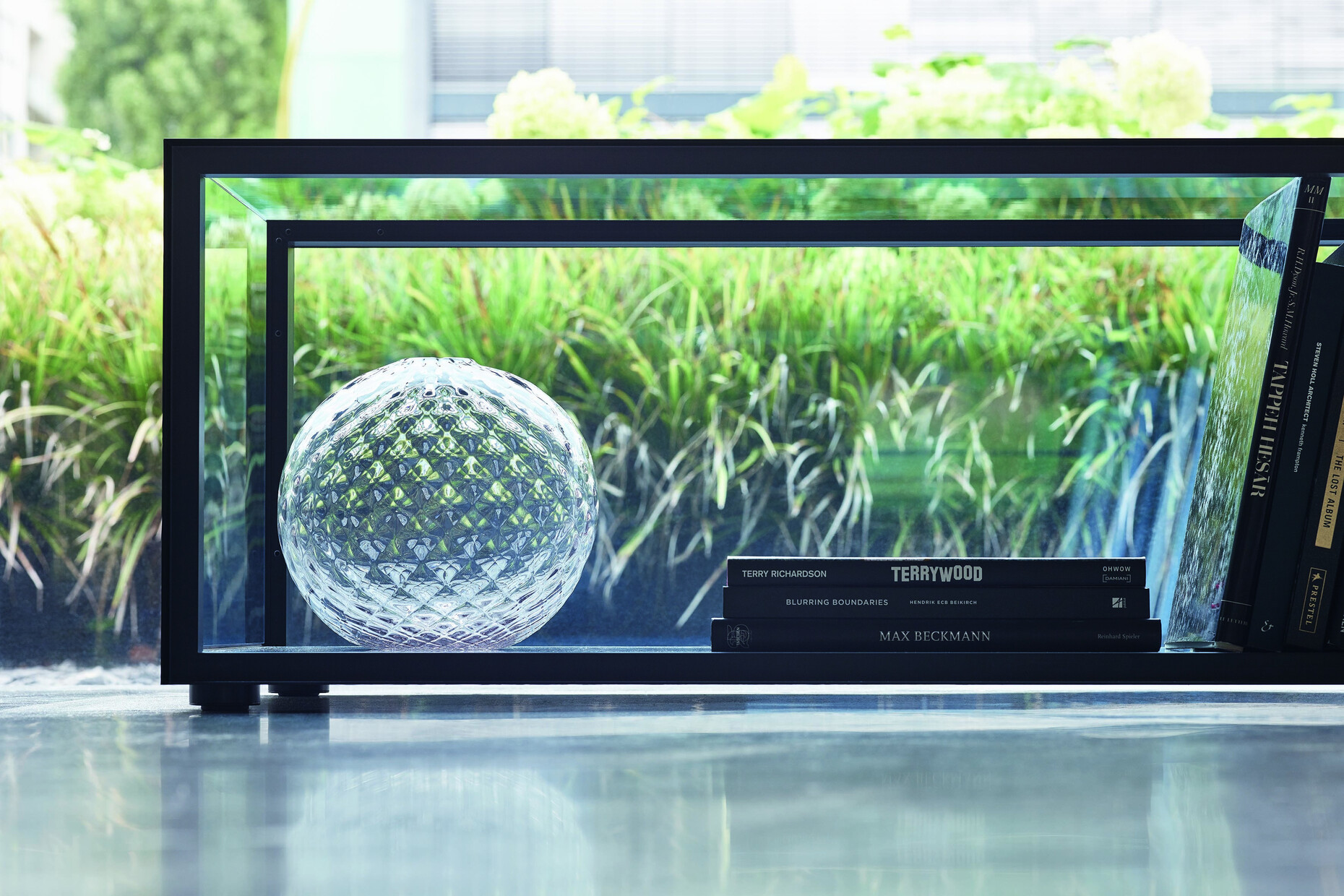STYLEPARK PIURE
Productive through Transparency
“When I talk about work situations, what I have in mind is an osmotic office, open and translucent,” says Werner Aisslinger, stretching his arms out. Most companies in Germany have long since come to realize that nowadays employees work more efficiently if no longer sitting segregated in Robert Propst’s “Cubicle”. Nonetheless, functional system furniture often comes across as stiff, lacking in color, and overly monumental. In the designer’s opinion, anyone who has to hide behind cabinets cannot work productively in a team. Werner Aisslinger’s new office and living line for Piure is intended to change that.
“Mesh” is the name of the new shelving system, which, instead of a fixed unit boasts a filigree aluminum frame. Perforated sheet elements and tinted glass allow for individual designs. As Aisslinger says, “it was about designing a durable hybrid that combines living and working, something that could do just about anything, as it were.” “Mesh” differs from existing module systems through its use of flexible, transparent, and structured finishes instead of continuous metal or wood panels. Doing away with the sealed levels in the system was the first challenge. The designer had to come up with a load-bearing frame structure in order to enable all the other elements to be replaced: “It’s like with a rustic-style wardrobe, you have a frame, and in the middle thin bracing,” he explains. Despite the light aluminum frame the product nevertheless had to be robust: “You have to find the right balance between load-bearing properties, the structure, visual stability and proportion.”
Promoting visual engagement
The style of the shelving system presented another hurdle: “When things are devised as modules from an engineering perspective they often have the disadvantage of not being attractive in terms of design. As a designer I have the difficult task of concealing the engineering such that for all the modularity a buyer doesn’t start to think he is buying an aesthetic compromise,” is Werner Aisslinger’s point of view. He has succeeded in bringing function and design together: Thanks to a chromed, a color powder-coated and a lacquered version of the frame, not to mention the interplay between the individual surfaces, “Mesh” blends in with any working and living environment. Transparency is ensured by glass and perforated sheet parts, which, thanks to their structure and color, produce changing visual effects. If you like things a little more striking there are 28 colors to choose from for the system’s design. For tougher purposes, seven of these come in a powder-coated version. Aisslinger himself intends to give interiors a clear identity by means of different colors: “I don’t want to encounter gray wall cabinets. There is meant to be a sort of visual engagement, the furniture is meant to be noticed, it is meant to have a life of its own and a presence,” he says.
Creating a feel-good atmosphere
Given that employees are unable to determine the office ambiance themselves, it is up to the interior design to address that shortcoming and create a feel-good atmosphere. Aisslinger considers his creative role in this to be “extremely important”: As a designer I have a social responsibility for what the working world looks like.” The designer was born with a love of color, in 1964 in Nördlingen in Swabia: “My nursery looked pretty wild, very colorful, and had wallpaper featuring giant red ‘Pril’ flowers, the ones used for the ‘Pril’ washing-up liquid logo. We’re all children of our time and it’s something you can’t shake off. In your own career as a designer you keep on looking for links to your childhood or your socialization as an adolescent as far as aesthetics, architecture, and design are concerned,” he sums up. The continuing retro trend in furniture design suits him well. Nonetheless, the plan for the next few years is to extend “Mesh” because, according to Aisslinger, “system furniture is subjected to an ongoing revolution, requirements and dimensions are changing all the time.” Work furniture has to adapt to the users’ needs, and not vice versa, he adds. At the same time we are faced with the challenge of giving a technologically so complex system a time of its own, instead of coming up with something new every year, thereby cannibalizing your own product.
For Aisslinger, collaborating with Piure also meant revisiting old times; after all, the manufacturer’s first collection, which was designed ten years ago, was his brainchild. Thanks to the good team work it took just six months for “Mesh” to evolve from a first design to being ready to market. “Designing a completely new modular system and on that basis then devising a new working world was a good assignment,” Aisslinger says.
It is still uncertain what his next project will be. “I’m not making any plans, more floating,” he says. In the past twenty years all his assignments have come to him, so to speak, which is why he is going to wait and see: “I’m open to anything that is not typical and is something I haven’t attempted yet.” He’d be interested in designing cutlery, for example. Or a bicycle. Instead of being purely a service provider he loves experimenting and pursuing utopian ideas – like Buckminster Fuller, who designed the geodesic domes, those circular, transportable houses in the 1940s. An opportunity for experimenting has already been scheduled: From November 11, 2016 Aisslinger will transform the “Paternoster Hall” at Neue Sammlung in Munich into a model for living and working entitled “Werner Aisslinger: House of Wonders”.
